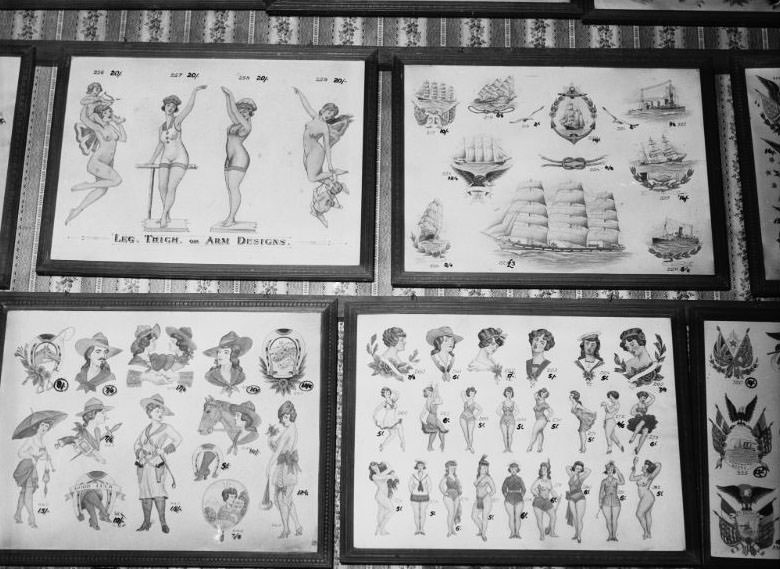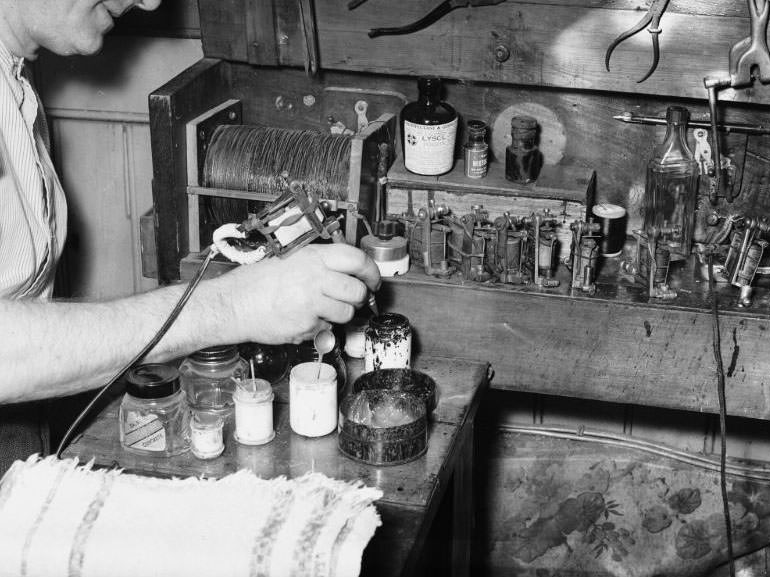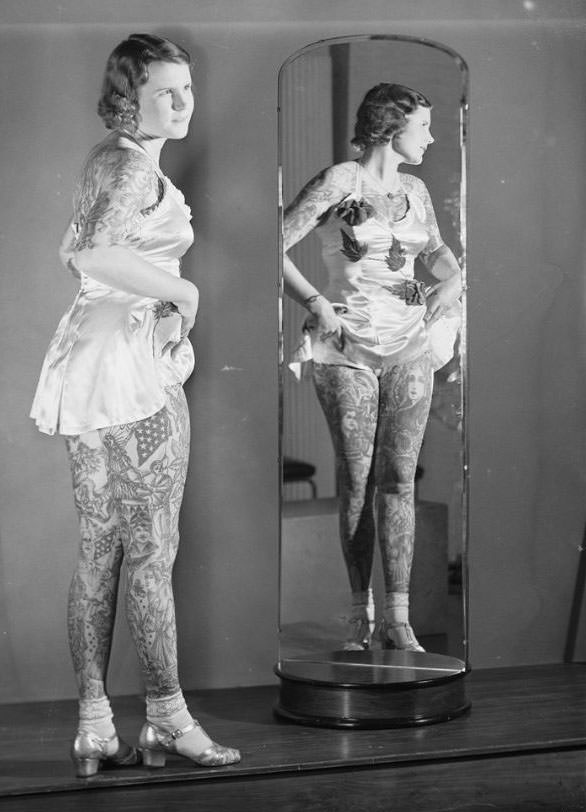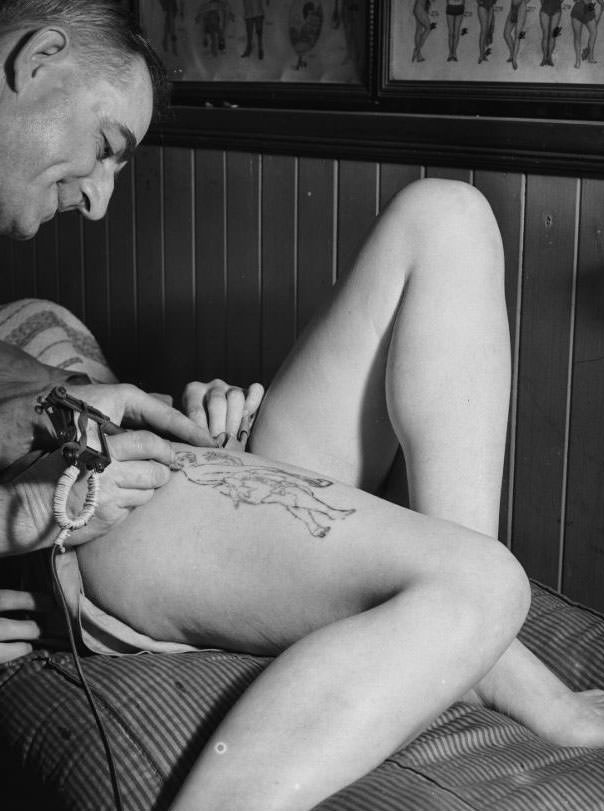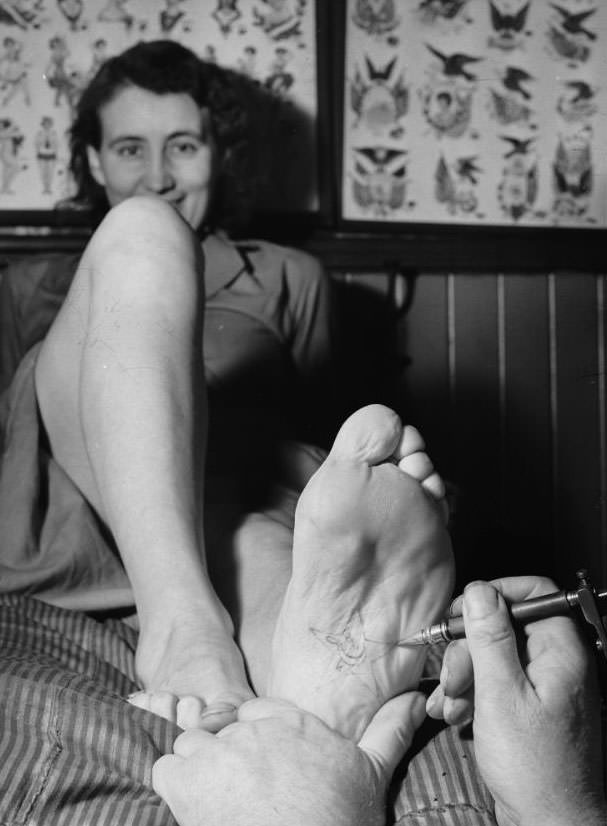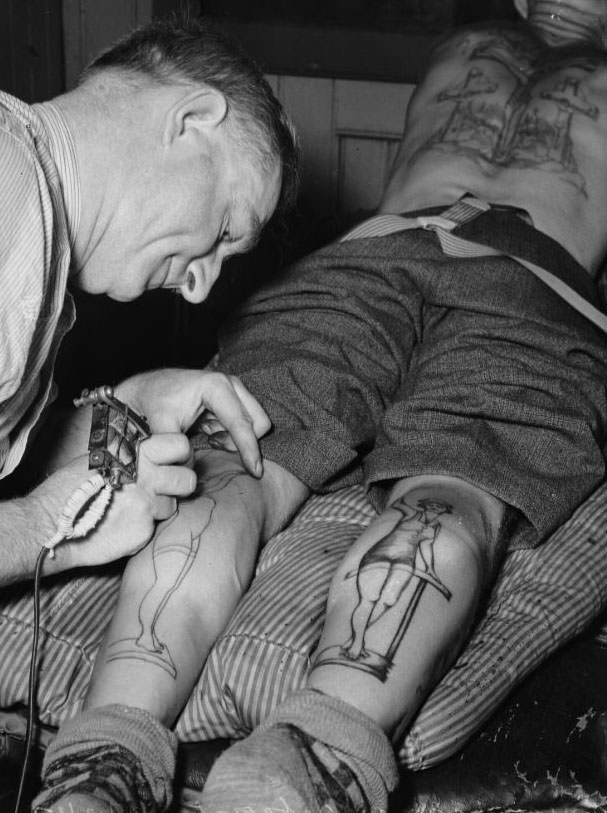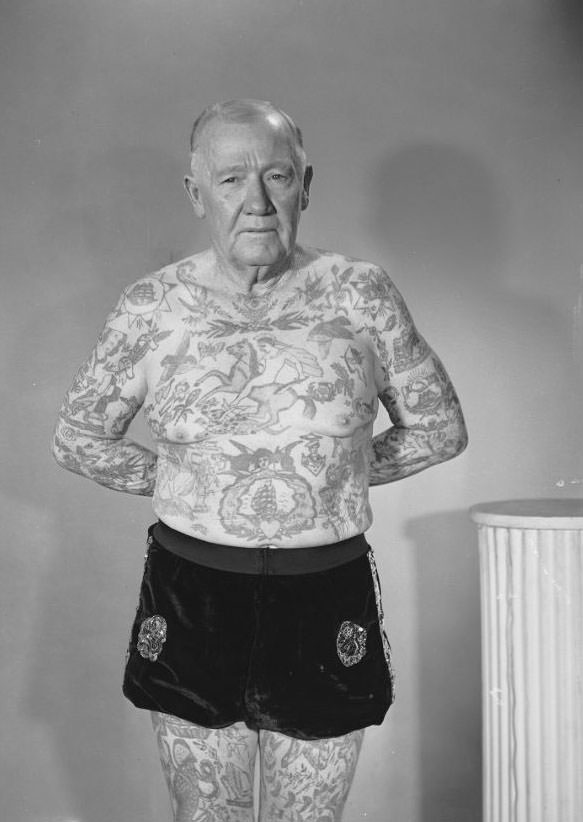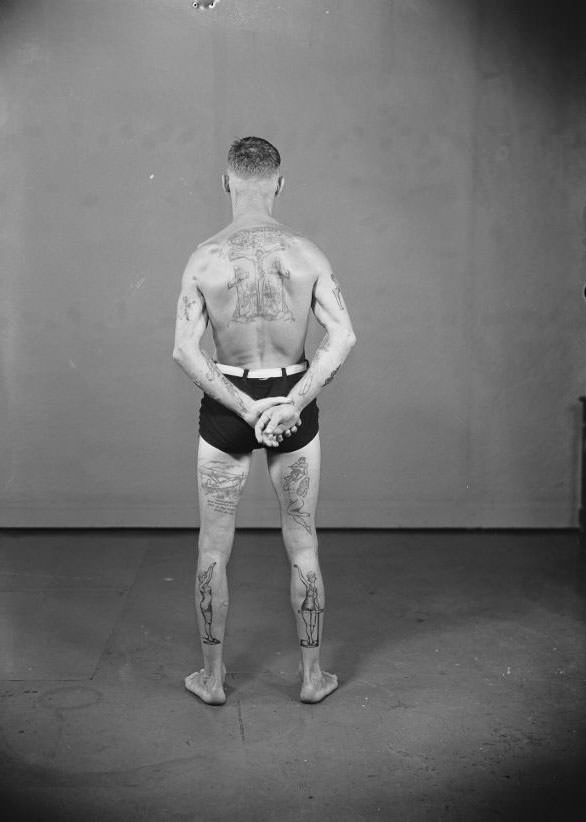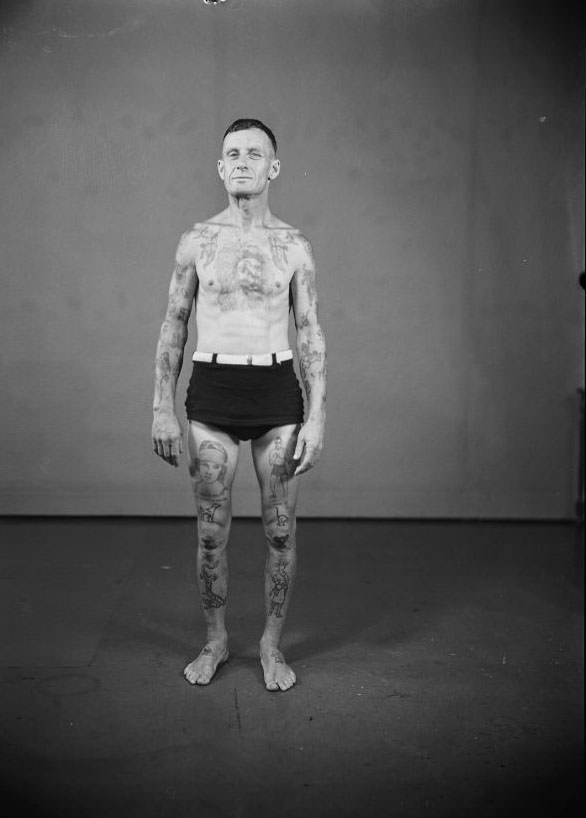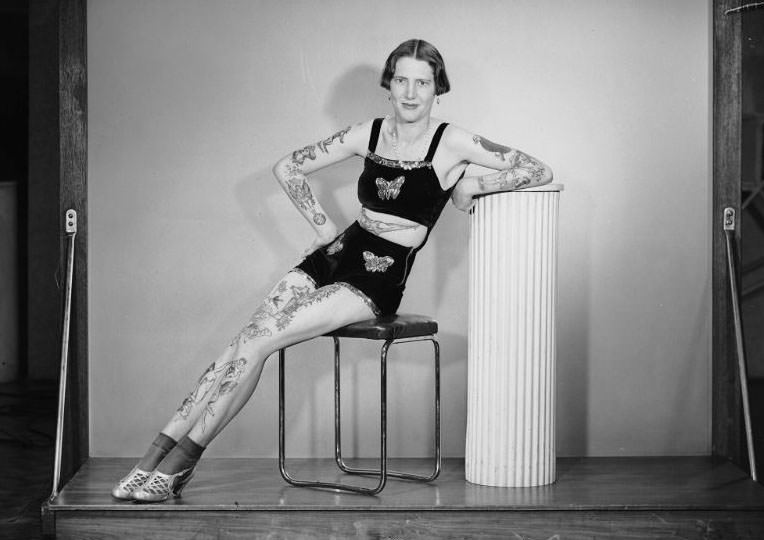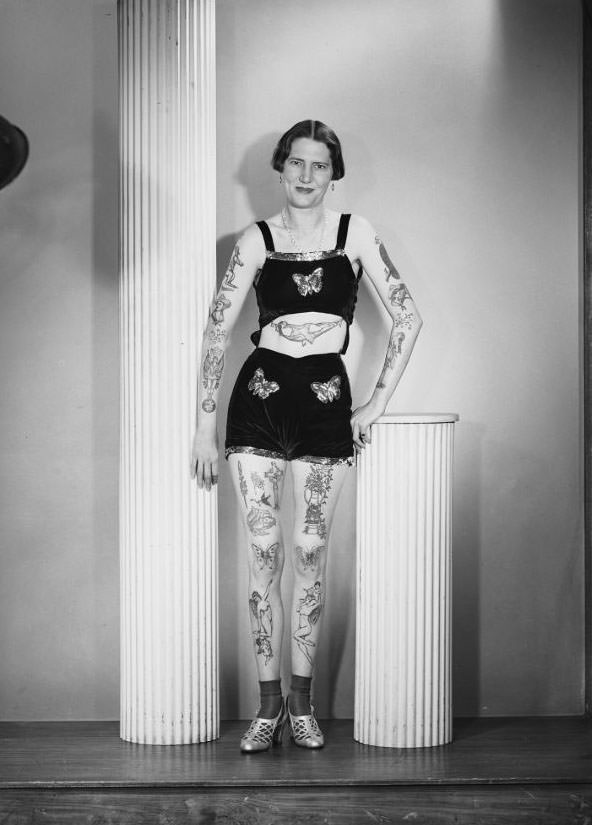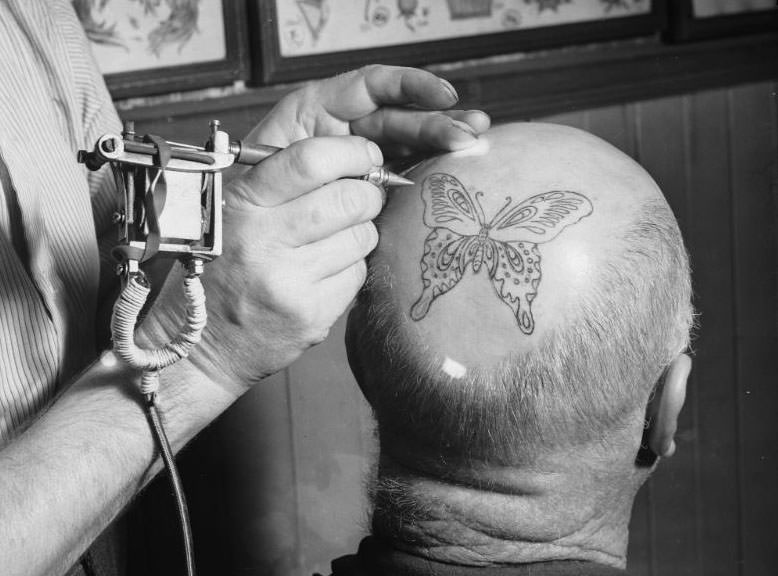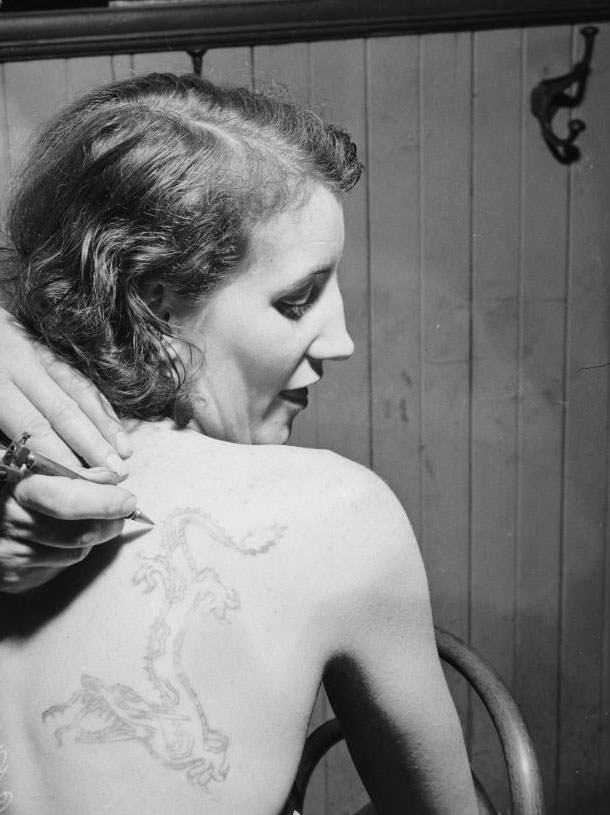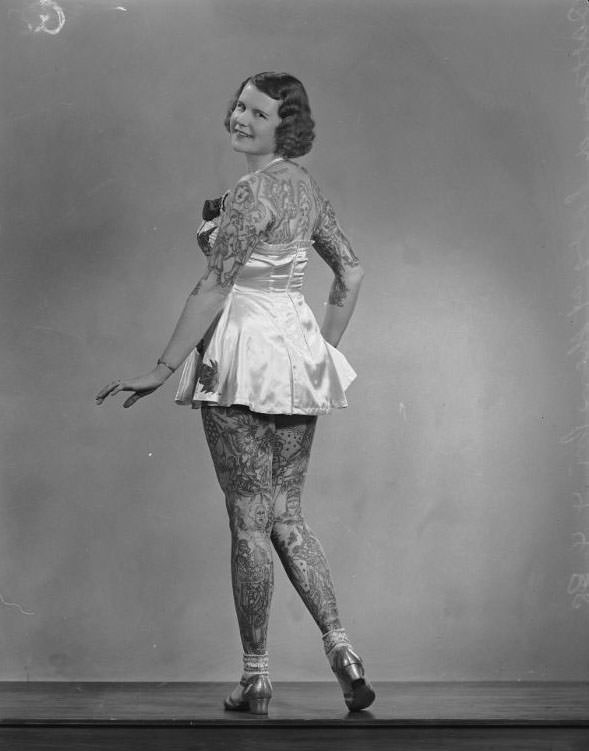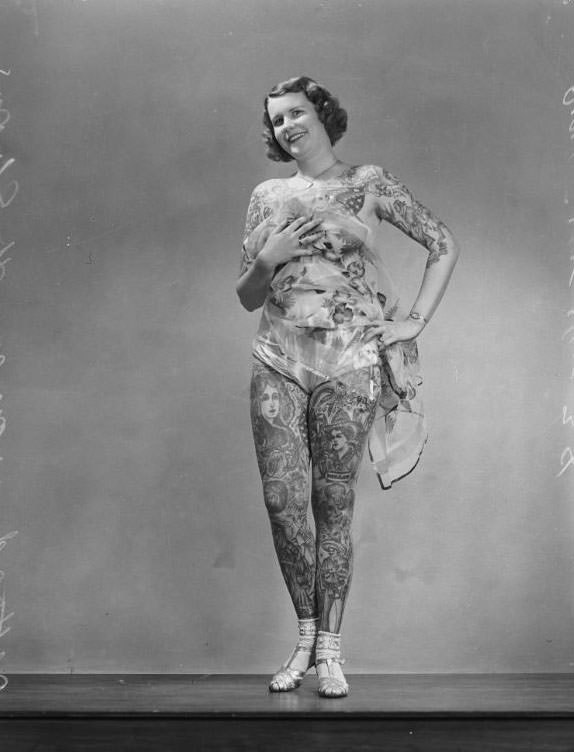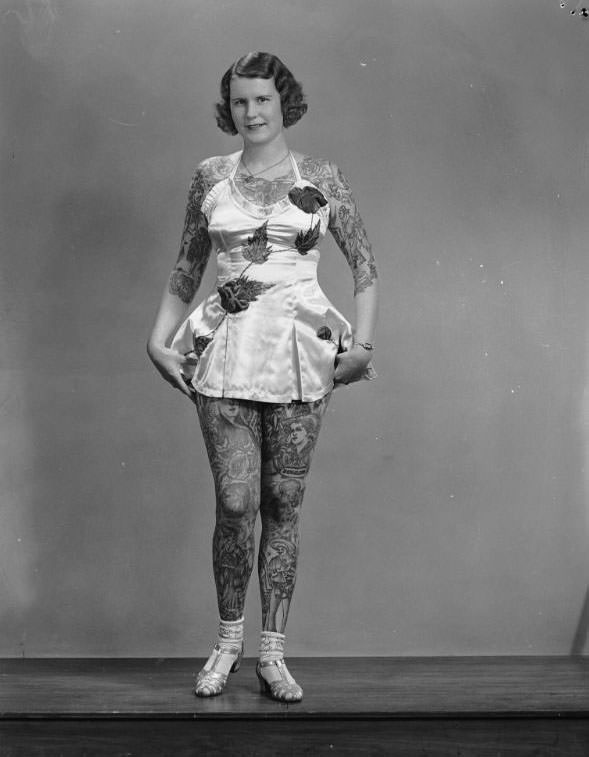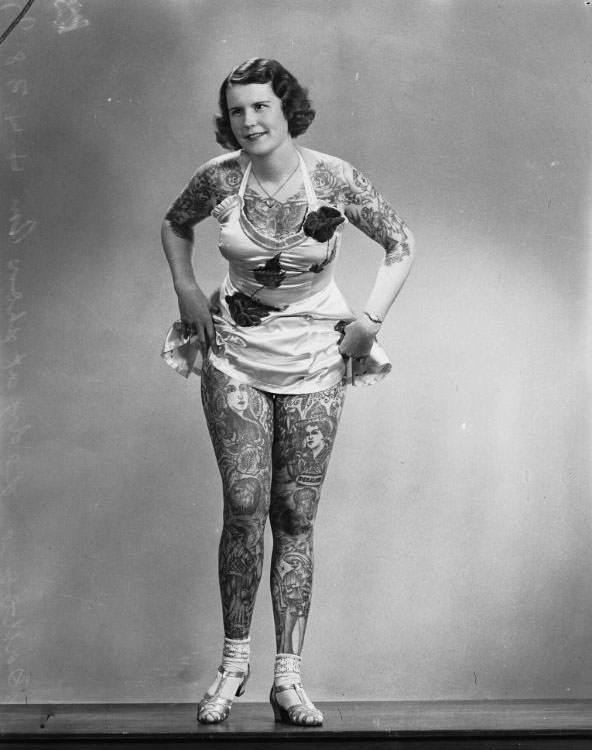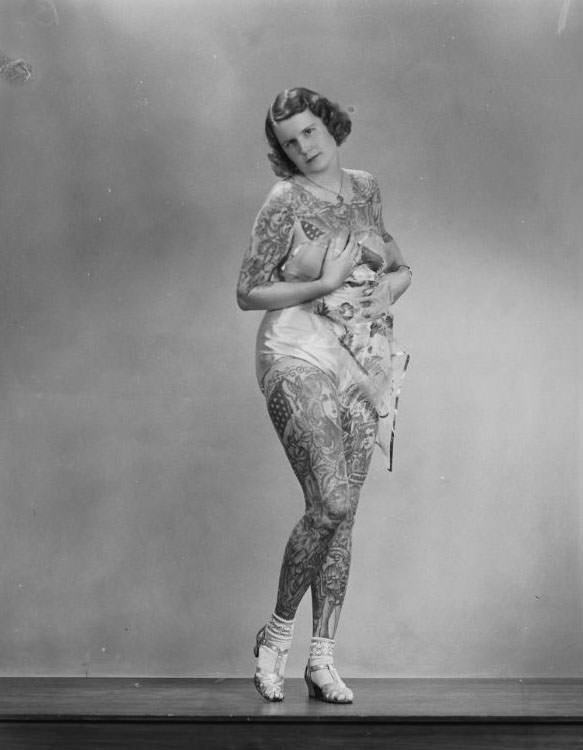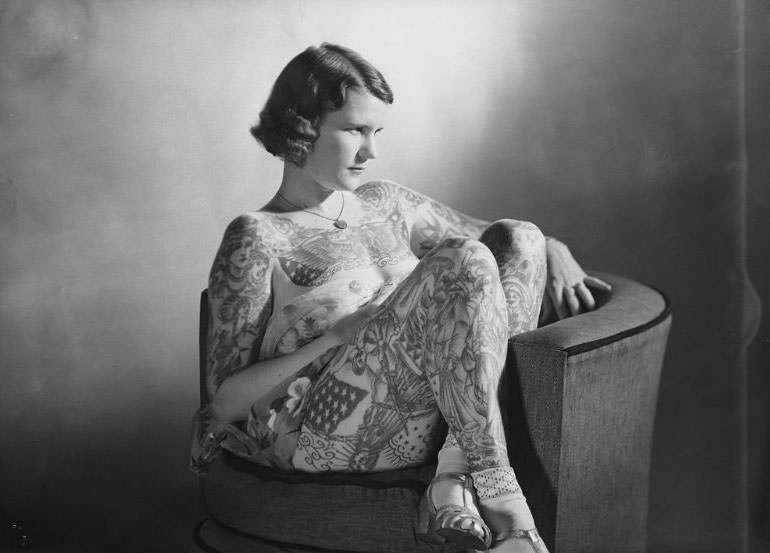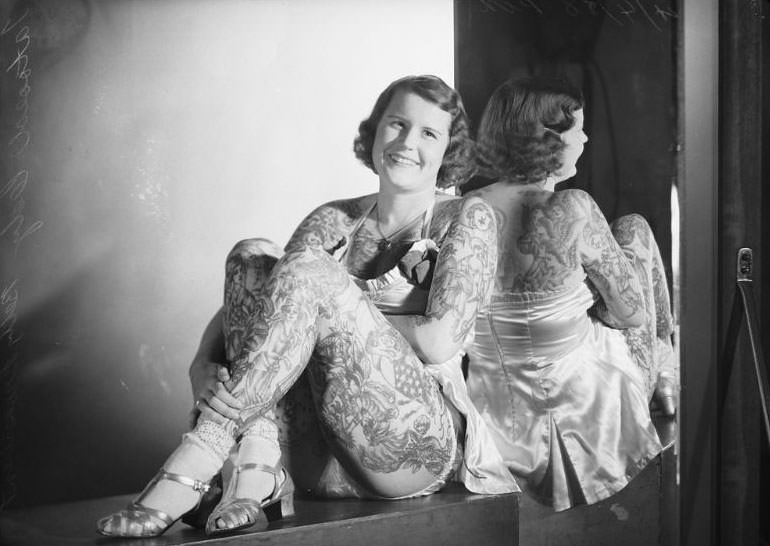Sometime around 1916, Fred Harris opened up a tattoo shop on Sussex Street, and for the next 28 years, he was the king of tattooing in Sydney. Tattoo designs reflected the culture, and Fred’s shop was a good indicator of the trends during the interwar years. 1923 was the year when women got in on the tattoo craze. Butterflies and flowers were popular, but not all designs were discreet. One woman wanted a rosella parrot, three horses heads, a stag, and pansies, all in one sitting. Another trend was for women to get tattoos on their legs so the designs could be seen through their stockings. Butterflies were also popular with men, although Fred’s tattoo in the picture wasn’t discreet.
By 1937, Fred was one of the best-known tattoo artists in the city and was inking around 2000 tattoos a year. Sailors were his main customers, but he also inked horses on jockeys, flowers on legs, and beauty spots on women. American sailors visiting the city were famous for having kangaroos and Australian flags tattooed on them.
Sailors have always decorated their bodies as they traveled the world; some of these designs had old sailing superstitions behind them. For example, a pig or a pig’s head was thought to prevent drowning, eyes on the nipples would sharpen sight, a ship’s propeller on the butt would improve movement, and hinges on the elbows would increase strength.
When war broke out in 1939, Fred’s business boomed with patriotic tattoos of soldiers’ names and regimental numbers. The most popular tattoos were the Australian flag, sometimes with the flags of Britain and France, which replaced hearts. He also saw an increase in people wanting to cover up tattoos of foreign flags. After the attack on Pearl Harbor, American sailors started asking for Fred’s trademark dagger with “Remember Pearl Harbor, December 7, 1941” inscribed.
Unfortunately, Fred passed away in late 1944 after nearly 35 years in the tattoo business.


